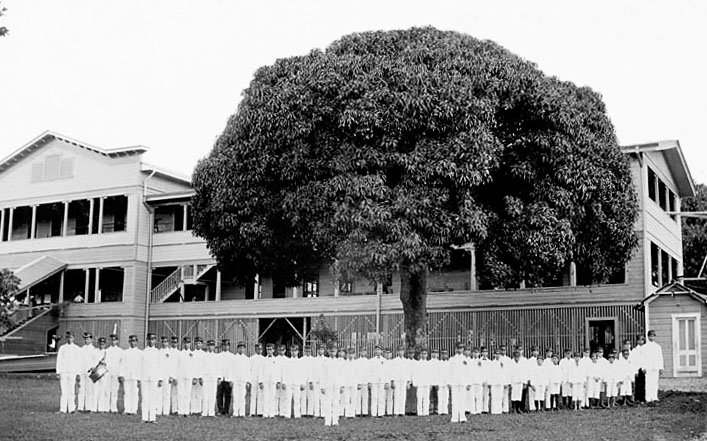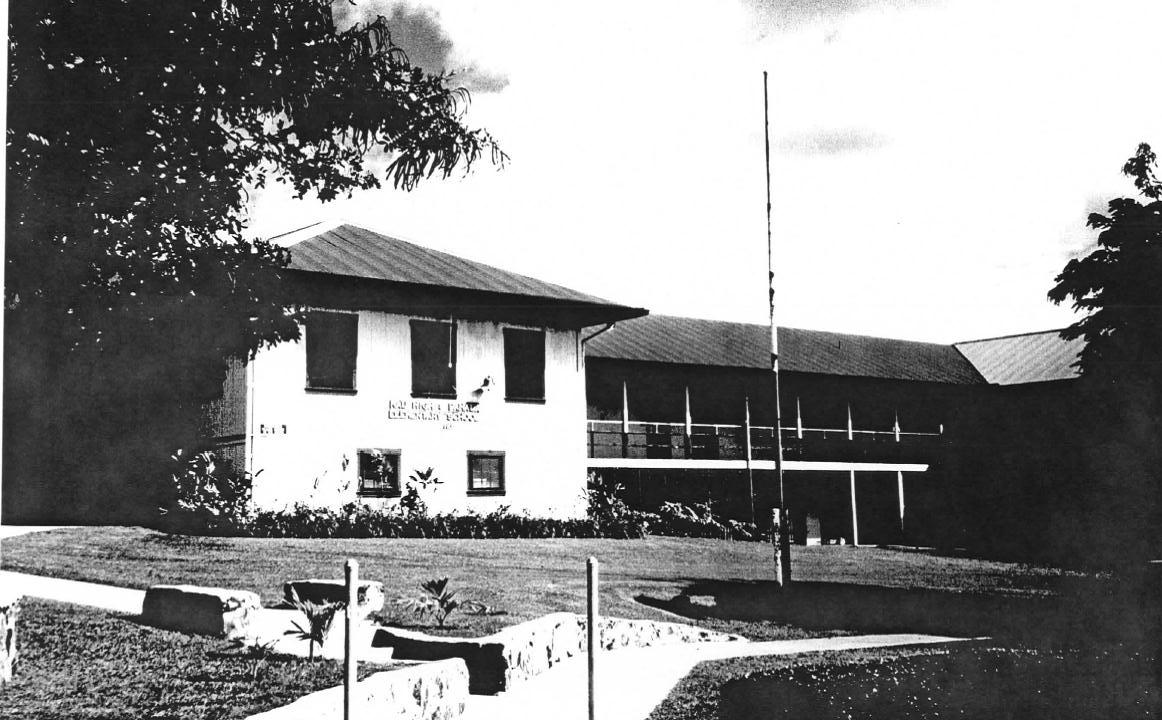|
Hawaii County Historic Schools |
|
Hawaii County HIGenWeb a proud part of
County Coordinator |
|
Hawaii County Historic Schools |
|
Hawaii County HIGenWeb a proud part of
County Coordinator |
If you have any additions please contact me
My interest is in Schools of a Historic nature
|
Early Schools The first missionaries that arrived in the islands hoped to convert what they thought of as a "heathen" nation into a Christian civilization. Education was essential to their eyes. First, their instruction was carried out in English. In 1822 the first printings in the native language were issued and the Hawaiian language became the universal language of education. The Queen Regent Kaahumanu strongly supported attendance in mission schools. With that support the attendance in mission schools increased from about 200 in 1821 to 2,000 in 1824. In 1828 over 37,000 attended the mission schools and in 1830 it was up to 41,238. Nearly half of these were on the island of Hawaii. Common schools began to spring up in villages all over the islands. At times these schools were sometimes manned by missionaries, but most often manned by young native men who had a basic education at the main missionary school. In the common schools attendance and classes were somewhat irregular. Basic reading and writing in Hawaiian and Christian doctrine were taught to many. In Hilo and Puna (one missionary district) there were about 100 common schools in the late 1830's which taught between 4,000 and 5,000 men, women and children. This was an area where the total population was about 12,000. On the Island of Hawaii an estimated 7,000 natives attended the common schools. Soon the Hawaiians initial interest in Christian religion pretty much disappeared. The American Board of Commissioners of the Foreign Missions decided in 1831 the Hawaiian Mission needed to be more self sufficient. They wanted a school for promising young native men that would carry on the work of white missionaries around the Pacific. The first such institution was the Lahainaluna Seminary on Maui by Lorrin B Andrews in 1831.
|
|
|
Hilo Boarding School ca 1836 from a drawing by Rev Edward Bailey. |
|
Hilo Boarding School Founded by David Belden Lyman with a grant of $500. After the first year, only $140 of the grant was spent on two grass huts for only about 12 boarders. By 1837, six graduates were sent to the seminary and the school continued to expand. The students helped to build a new wood framed building for the school and a house for the Lyman Family. Mrs Lyman opened a school for girls in 1839. All of the students grew their own food and to grow some cash crops to support themselves and any expenses. By 1840 thousands of pounds of sugar and molasses were produced each year. In 1846, King Kamehameha III granted the school water rights to the Wailuku River. The school was officially incorporated in 1848. And in 1853 the school instructed students in the English language as well as the Hawaiian Language. However, the church and school were partially destroyed by a fire. Arson was suspected, no deaths and one serious injury. Local businesses raised funds to rebuild, and the total amount was added to by the Legislature of the Hawaiian Kingdom. An entire shipload of lumber was purchased from the west coast of American and went into building a new wood framed church, new boarding school buildings and a new wing and second floor on the house to accommodate the Lymans growing family. Lyman retired as head of the school in 1873 and the Native Hawaiian Reverend J Makaimoko Naeole became principal for the following five years. William Brewster Oleson was the schools principal from 1878-1886 when he was called upon to organize the Kamehameha Schools as a similar boarding school. Levi Lyman (son of Frederick Lyman, grandson of David B Lyman) was the principal from 1897-1922, encouraging many developments during his management of Hilo Boarding School. The school was the first building built with electricity in Hilo when a dynamo was installed on the river in 1892. They later sold power to a new company formed by one of the Lyman's sons. Source: https://evols.library.manoa.hawaii.edu; wikipedia; |
 |
Hilo Boarding School. This photo is ca 1909. |
 |
Kau High and Pahala Elementary School School was established in 1881. It was the first high school started on the Big Island. The high school was started afater the 1876 opening of the Hawaiian Agricultural Company, which was a predecessor of the Ka'u Sugar company. At that time Ka'u Sugar Company was the largest most remote sugarcane plantations in Hawaii. |
|
Historic photo needed please |
Honoka'a High School and Intermediate School This school was established in 1889 for students from the Hamakua Coaster Sugar Cane Communities and children of the Parker Ranch workers.
|
.jpg) |
Hilo High School, 1908 This school was started in September 1905. At the time the only high schools on Hawaii were Kau High and Pahala Elementary school and Honokaa High and Intermediate school which were both over 30 miles away in rural sugar communities. At that time most students that went to high school went to boarding school in Honolulu. The first graduating class was in 1909.
|

This page was last updated on -04/07/2018